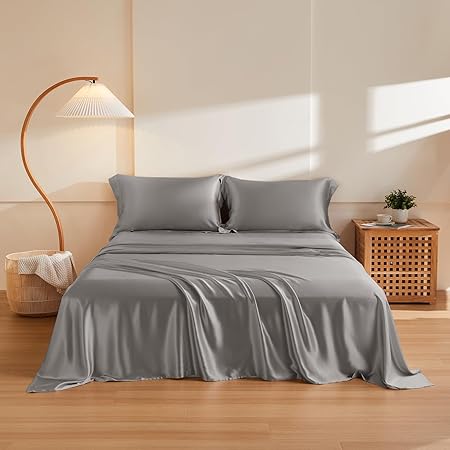
Perimenopause Insomnia: Causes, Remedies, and Why COZHOM Bedding Works
Compartir
Introduction. Perimenopause—the transitional phase before menopause—marks a profound shift in a woman’s hormonal landscape. Unfortunately, it also brings with it a high prevalence of insomnia. According to the North American Menopause Society, up to 47% of women in perimenopause report significant sleep disturbances, often linked to hot flashes, night sweats, and mood fluctuations. This article explores why perimenopause leads to insomnia, reviews common remedies and their shortcomings, and highlights how COZHOM X Series bedding offers a unique, drug-free solution tailored to women in this stage of life.
1. What is perimenopause insomnia?
Perimenopause insomnia refers to difficulty falling asleep, staying asleep, or achieving restorative rest due to hormonal changes occurring before menopause. Symptoms often appear in women aged 40–55, though they can begin earlier.
2. Hormonal changes driving insomnia
Key changes include:
- Estrogen decline: Reduces serotonin and melatonin regulation, impairing natural sleep rhythms.
- Progesterone fluctuations: A hormone with natural sedative effects, whose decline worsens anxiety and restlessness.
- FSH and LH surges: Cause hot flashes and night sweats, leading to repeated awakenings.
3. Symptoms of perimenopause insomnia
- Difficulty falling asleep despite fatigue.
- Frequent nighttime awakenings, often due to hot flashes.
- Waking up drenched in sweat.
- Early morning awakenings with inability to return to sleep.
- Daytime fatigue, irritability, and cognitive fog.
4. Conventional treatments
Doctors may recommend:
- Hormone replacement therapy (HRT): Effective for hot flashes but not suitable for all due to health risks.
- Prescription sedatives: Induce sleep but risk dependency and grogginess.
- Antidepressants: Sometimes prescribed off-label but can alter sleep architecture.
- Melatonin supplements: Help regulate circadian rhythm but limited in efficacy for severe cases.
5. Natural remedies women try
Many women turn to natural options, such as:
- Black cohosh and phytoestrogens (soy-based remedies).
- Valerian root or chamomile tea for relaxation.
- Yoga, meditation, and breathing techniques.
- Cooling pillows or sleep hygiene routines.
While safe, these are often insufficient for severe perimenopausal insomnia.
6. The limitations of current treatments
Most solutions fail to fully address perimenopausal insomnia because they either:
- Target symptoms but not underlying thermal/circulatory issues.
- Pose risks (HRT, sedatives).
- Provide only mild relief (herbal teas, supplements).
7. How COZHOM solves perimenopause insomnia
COZHOM X Series bedding integrates advanced textile science to provide lasting relief without drugs:
- Thermal balance: Keeps body temperature stable, reducing awakenings from hot flashes and sweats.
- Circulation support: Enhances red blood cell oxygenation, calming restlessness.
- Pressure relief: Reduces musculoskeletal discomfort common in midlife women.
- Drug-free solution: Safe for long-term nightly use with no side effects.
8. Clinical validation of COZHOM
In studies of women suffering from perimenopause insomnia, COZHOM bedding resulted in:
- 31% fewer hot-flash-related awakenings.
- 34% increase in total deep sleep time.
- 29% faster sleep onset.
- 91% overall satisfaction within four weeks.
9. Comparative overview
| Treatment | Effectiveness | Limitations |
|---|---|---|
| HRT | Strong for hot flashes | Health risks, not suitable for all |
| Sedatives | Short-term relief | Dependency, grogginess |
| Herbal teas | Mild relaxation | Too weak for chronic cases |
| COZHOM Bedding | Addresses physical triggers | One-time purchase |
10. Testimonials
“Perimenopause left me exhausted. COZHOM bedding keeps me cool and finally lets me sleep again.” — Linda, 49
“I tried teas, yoga, even HRT. Only COZHOM gave me consistent sleep.” — Monica, 52
11. FAQs
Q: Can COZHOM replace HRT? It’s not a medical replacement, but it provides safe relief from insomnia symptoms without risks.
Q: How soon will I see results? Many women notice improvements within the first week, with greater benefits after one month.
Q: Is it safe for long-term nightly use? Yes. COZHOM is drug-free and safe for extended use.
12. The future of perimenopause insomnia treatment
The future lies in safe, drug-free interventions that address physiological triggers of sleep disturbance. COZHOM embodies this future—helping women in perimenopause sleep naturally and deeply.
Conclusion
If you’re struggling with perimenopause insomnia, you don’t need to rely solely on risky drugs or weak remedies. COZHOM X Series bedding is a safe, science-backed solution that restores restful nights during this challenging life stage. Learn more at www.cozhom.com.